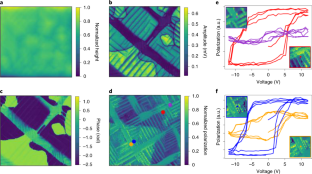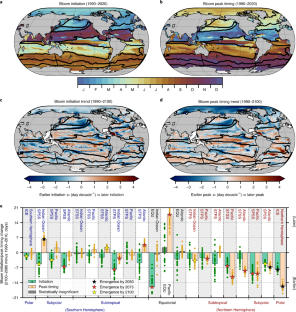2022-05-09 アメリカ・ローレンスリバモア国立研究所(LLNL)
有害藻類ブルーム(HAB)は世界的な現象で、淡水の湖や貯水池ではマイクロシスチス属のシアノバクテリアが野生生物や人間に有害なアミノ酸に似た一連の毒素であるマイクロシスチンを生成することによって起こります。マイクロシスチン濃度に影響を与える環境要因を理解し、予測能力を開発することは、人間と環境の健康を守り、最終的には将来のHABを防止するために非常に重要です。
研究チームは、シアノトキシンの同位体標識を使って、エリー湖におけるその分解を調べました。LLNLのNanoSIMS装置を用いて、小さいながらも非常に活性の高いマイクロバイオーム成分が毒素の分解に関与していることを確認しました。この研究は、Limnology and Oceanography誌に掲載されました。
<関連情報>
- https://www.llnl.gov/news/better-algal-forecasts-comes-safer-water
- https://aslopubs.onlinelibrary.wiley.com/doi/10.1002/lno.12096
エリー湖西流域におけるミクロシスチン生成量と生分解速度の定量化 Quantification of microcystin production and biodegradation rates in the western basin of Lake Erie
Justin D. Chaffin,Judy A. Westrick,Elliot Furr,Johnna A. Birbeck,Laura A. Reitz,Keara Stanislawczyk,Wei Li,Peter K. Weber,Thomas B. Bridgeman,Timothy W. Davis,Xavier Mayali
Limnology and Oceanography Published: 04 May 2022
DOI:https://doi.org/10.1002/lno.12096

Abstract
Cyanobacterial biomass forecasts currently cannot predict the concentrations of microcystin, one of the most ubiquitous cyanotoxins that threaten human and wildlife health globally. Mechanistic insights into how microcystin production and biodegradation by heterotrophic bacteria change spatially and throughout the bloom season can aid in toxin concentration forecasts. We quantified microcystin production and biodegradation during two growth seasons in two western Lake Erie sites with different physicochemical properties commonly plagued by summer Microcystis blooms. Microcystin production rates were greater with elevated nutrients than under ambient conditions and were highest nearshore during the initial phases of the bloom, and production rates were lower in later bloom phases. We examined biodegradation rates of the most common and toxic microcystin by adding extracellular stable isotope-labeled microcystin-LR (1 μg L−1), which remained stable in the abiotic treatment (without bacteria) with minimal adsorption onto sediment, but strongly decreased in all unaltered biotic treatments, suggesting biodegradation. Greatest biodegradation rates (highest of −8.76 d−1, equivalent to the removal of 99.98% in 18 h) were observed during peak bloom conditions, while lower rates were observed with lower cyanobacteria biomass. Cell-specific nitrogen incorporation from microcystin-LR by nanoscale imaging mass spectrometry showed that a small percentage of the heterotrophic bacterial community actively degraded microcystin-LR. Microcystin production and biodegradation rates, combined with the microcystin incorporation by single cells, suggest that microcystin predictive models could be improved by incorporating toxin production and biodegradation rates, which are influenced by cyanobacterial bloom stage (early vs. late bloom), nutrient availability, and bacterial community composition.



